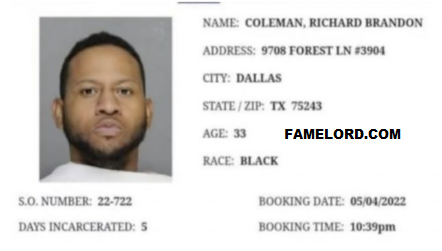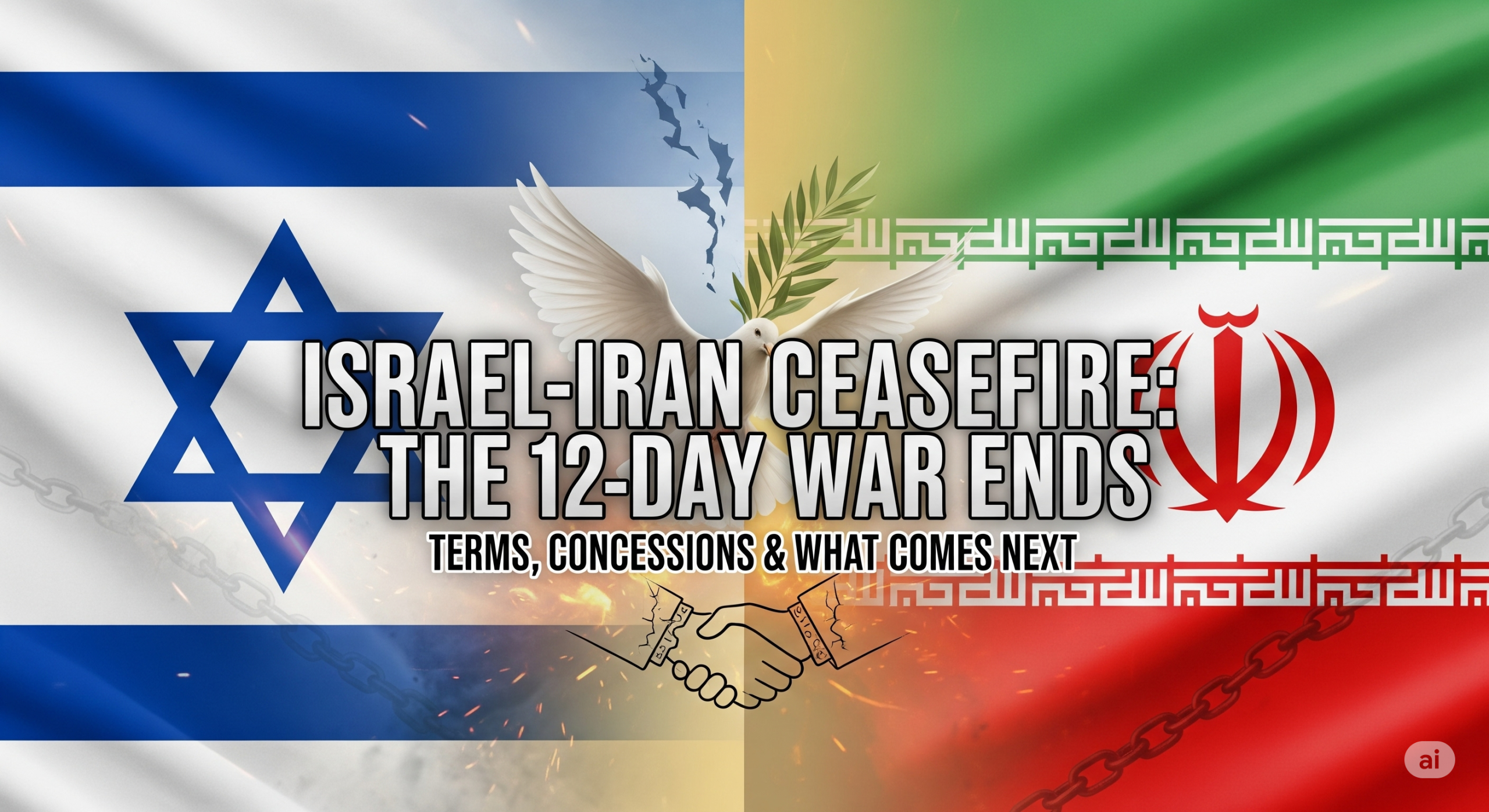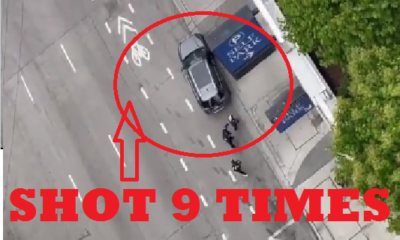Editorials
Is Richard Brandon Coleman Cora Jakes Husband In Jail? Are They Divorced?

Richard Brandon Coleman, a well-known American rapper who performs under the name Skii Ventura was married to Cora Jakes, the daughter of T.D. Jakes, the founder of The Potter’s House non-denominational church, who is a prominent American pastor, author, social media influencer, and motivational speaker. The couple exchanged their wedding vows in 2011 and have two children, a daughter named Amauri Noelle Coleman and a son named Jason Coleman.

Unfortunately, Richard Brandon Coleman’s recent arrest on May 4, 2022, on child abuse charges has had a severe impact on their marriage. Cora announced their divorce earlier this year on her social media platforms in January, citing the alleged abuse as the reason. Rumors suggest that the arrest may be linked to the suspected sexual abuse of their daughter, Amauri.
In contrast, Cora’s father, T.D. Jakes, has five children with his wife Serita, and Jamar Jakes, his oldest child, aged 43, is the general manager of The Potter’s House.
Richard Brandon Coleman arrest is related to charges of child molestation. He is currently incarcerated at the Wayne McCollum Detention Center in Waxahachie, Texas. It’s crucial to acknowledge that allegations of abuse must be handled with sensitivity and care, and we must wait for the legal process to ensure justice for all parties involved.
Cora Jakes announced her divorce earlier this year on her social media platforms in January. Cora is a well-known American pastor, author, social media influencer, and motivational speaker.
Cora’s divorce announcement came as a shock to many of her followers, as the couple seemed to have a strong and loving relationship. However, the alleged child abuse charges against her husband may have played a significant role in their separation.
The details of their divorce settlement and custody arrangements are not publicly available. Still, it’s essential to respect Cora’s privacy during this difficult time and hope that both parties can reach an amicable resolution.
It’s important to note that divorce is a challenging and often painful process for all parties involved, and we should offer compassion and support to those going through it.
View this post on Instagram
Editorials
The Israel-Iran Ceasefire Agreement: Potential Terms and How Trump Did It!!…FIND OUT!!

Trump could have leveraged his close relationship with Netanyahu to privately urge Israel to avoid prolonged war, possibly offering military assurances in exchange for de-escalation. To reach Iran, he might have used backchannel mediators like Oman or Qatar, capitalizing on his Gulf business connections to pass messages discreetly. His proposed 24-hour staggered ceasefire—where Iran halts fire first, followed by Israel—would allow both sides to save face while creating a cooling-off period. Recognizing mutual war fatigue, Trump could have framed the deal as a “dignified exit,” warning Iran that China and Russia wouldn’t intervene if the U.S. fully backed Israel, while reminding Israel that Hamas and Hezbollah remained bigger threats. By announcing the deal on Truth Social, Trump would control the narrative, positioning himself as the indispensable peacemaker and overshadowing current U.S. leadership. Iran might agree to temporary concessions like pausing high-level uranium enrichment, while Israel could secure a halt to missile attacks and U.S. security guarantees. The ceasefire would likely hold short-term due to global pressure, but long-term peace would fail without addressing core issues like Iran’s nuclear program and proxy wars. Ultimately, this scenario would serve Trump’s legacy as a dealmaker—but only delay, not resolve, the deeper conflict.
The Ceasefire Structure
The reported agreement outlines a 24-hour phased ceasefire:
-
First 12 hours: Iran halts all hostilities.
-
Next 12 hours: Israel reciprocates, followed by a full cessation of war.
This staggered approach likely ensures neither side exploits the pause for last-minute attacks. A third-party mediator (possibly the U.S.) may monitor compliance.
2. Key Concessions from Israel
A. Halt to Assassinations & Strikes on Iranian Soil
-
Israel has historically targeted Iranian nuclear scientists and military sites.
-
The deal may require Israel to pause covert operations inside Iran, at least temporarily.
B. No Further Strikes on Iranian Proxies (Hezbollah, Hamas, Houthis)
-
Israel may agree to reduce airstrikes on groups like Hezbollah in Lebanon or IRGC assets in Syria.
-
However, this would likely be conditional on Iran restraining its proxies.
C. Limited Public Commitments on Nuclear Threats
-
Israel might avoid explicit threats against Iran’s nuclear program to prevent escalation.
-
Behind closed doors, however, sabotage (cyberattacks, espionage) could continue.
3. Key Concessions from Iran
A. Freeze on High-Enriched Uranium Production
-
Iran may agree to temporarily cap uranium enrichment at 60% (weapons-grade is 90%).
-
This could be a symbolic gesture to avoid triggering further Israeli or U.S. strikes.
B. Restraint on Proxy Attacks
-
Iran may pledge to limit arms shipments to Hezbollah and Hamas.
-
However, full disarmament is unlikely—Tehran relies on proxies for regional influence.
C. Recognition of Israel’s Right to Exist (Indirectly)
-
While Iran’s regime won’t formally recognize Israel, it may tacitly accept the ceasefire as a de facto acknowledgment.
-
Hardliners will likely reject this, but Supreme Leader Khamenei could justify it as a tactical pause.
4. U.S. & International Involvement
A. U.S. Security Guarantees
-
The Biden or Trump administration (depending on the 2025 election) may offer:
-
Increased military aid to Israel (e.g., advanced missile defense).
-
Sanctions relief for Iran (e.g., oil exports, frozen assets) if compliance holds.
-
B. Role of Regional Players
-
Saudi Arabia & UAE: Could push for a broader Middle East security pact.
-
Russia & China: May act as guarantors for Iran, ensuring no Western-led regime change.
5. Potential Loopholes & Future Risks
A. Proxy War Continues in Shadows
-
Iran may still fund militant groups, just more discreetly.
-
Israel could resume targeted killings if it detects nuclear advancements.
B. Short-Term Truce, Not Lasting Peace
-
Without addressing core issues (nuclear program, Palestinian conflict, regional hegemony), tensions will resurface.
C. Domestic Backlash in Both Nations
-
In Israel: Far-right ministers (e.g., Ben-Gvir) may reject concessions.
-
In Iran: Hardliners could accuse the government of weakness.
Conclusion: A Fragile, Temporary Peace
This ceasefire is likely a tactical pause, not a long-term solution. Both nations avoid all-out war but retain their strategic goals:
-
Israel maintains military dominance.
-
Iran keeps its nuclear latency and proxy network.
The real test will be whether this truce evolves into broader diplomacy—or becomes merely an intermission before the next conflict.
What’s Next?
-
Watch for UN Security Council resolutions formalizing the deal.
-
Monitor Iran’s uranium enrichment levels in coming months.
-
Observe whether Hezbollah/Hamas attacks decline or continue under the radar.
For now, the world breathes a sigh of relief but the underlying tensions remain as volatile as ever.
-

 Entertainment2 years ago
Entertainment2 years agoIs Frankie Lapenna Butt Real? Find About About Frankie Lap!!
-

 Entertainment4 years ago
Entertainment4 years agoLil Reese shot in downtown Chicago! Watch The Crime Scene CCTV Video!!
-

 Entertainment4 years ago
Entertainment4 years agoRapper Pooh Shiesty Caught On Video With A Trans Woman! Is He Gay?
-

 Entertainment3 years ago
Entertainment3 years agoWhat Happened To Cody Lane?
-

 Entertainment4 years ago
Entertainment4 years agoPastor Claudia Jaramillo: Redefining Leadership and Womanhood on the Pulpit
-

 Entertainment4 years ago
Entertainment4 years agoCorinna Kopf Photos Hours After She Joined!! Who is Corinna Kopf?






![Kodak Black - Last Day In [Video]](https://famelord.com/wp-content/uploads/2021/06/Screenshot-178-80x80.png)